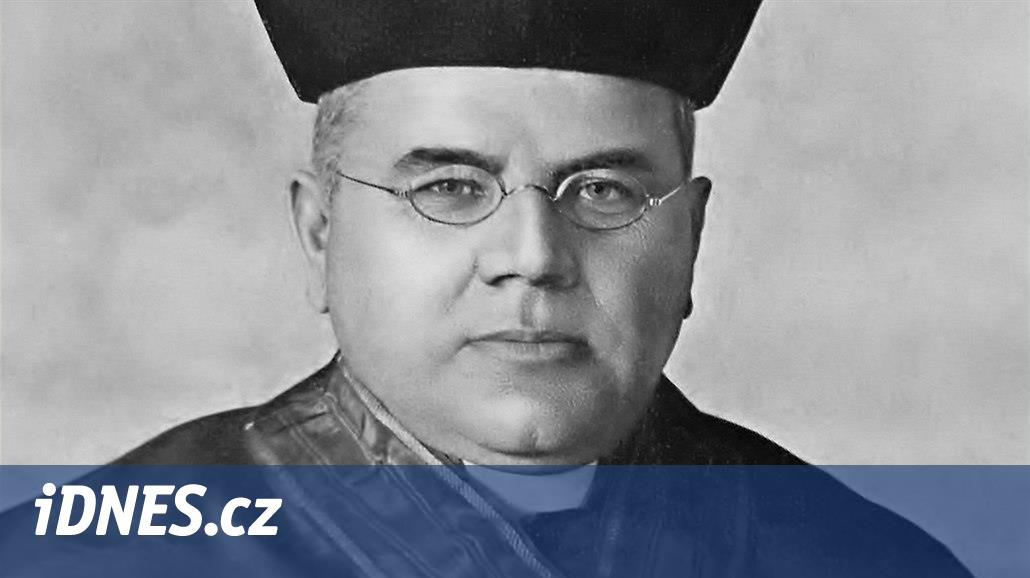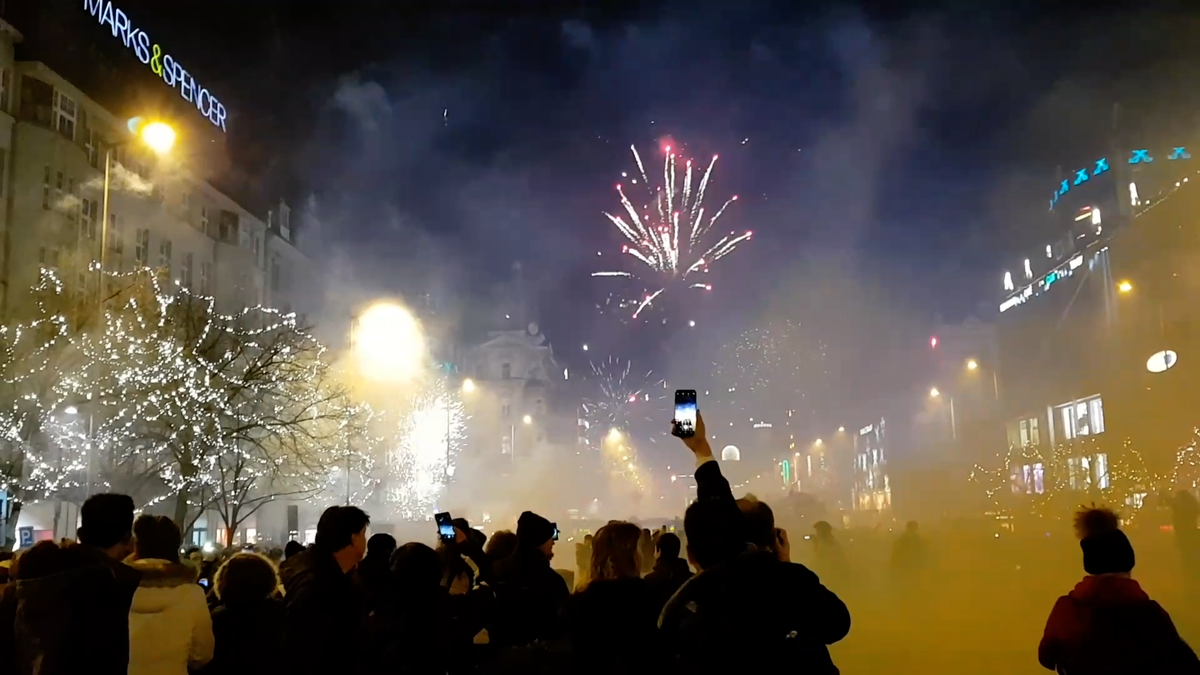When Pope Jan Paul II arrived in Czechoslovakia after the Velvet Revolution, his first steps led to the Velehrad memorial, and there to the Royal Chapel to the tomb of Archbishop Olomouc Antonín Cyril Stojan.
By then, Rome had already had requests from Czechoslovak officials for Stojan’s beatification on the table for three years. Six years later, the Pope confirmed the decree on Stojan’s heroic virtues. His successor, Pope Francis, later recognized this virtue in 2016. With this, the Czech Church reached the final step of separating the admired and beloved archbishop from his proclamation as a saint.
All that is missing is a miracle. “A number of extraordinary hearings have been reported, but so far there has been no case so convincing that the Holy Father can recognize it as a miracle,” said Archbishop of Prague Jan Graubner in the book Priestly Personalities.
However, this does not change the aura that Stojan spreads around him, and which is deeply felt by believers to this day. In Velehrad, which marks 100 years since his death, we can expect higher attendance than in other years.
“The stand is interesting because you always try something new. We see him today as a traditional figure of the church. But if he invented the lottery, he solved social problems and thereby showed the Church that he did not quite solve them, if he put forward the idea of dialogue between Christians 60 years before the Second Vatican Council, then that is revolutionary. He does not represent the traditional church, but someone who was very brave in many ways, including the extent to which he gave,” said Petr Hudec of Matica Velehradská, who prepared the exhibition for Stojan’s birthday.
Residents of Beňovo, Příbor or Dražovice will bring gifts during the solemn pilgrimage mass. All places are connected to Stojan. He was born in the first year 1851, in the second he began his priestly pilgrimage at the age of 25, in the third he spent 20 years as parish priest. In addition, the main Velehrad service will take place on July 5, which is also the day of the priestly ordination of Stojan 147 years ago. He wanted to be one in his youth.
He was born in 1851. He was one of the most gifted and diligent students at school. Even then, not only his faith and his strong connection with the legacy of Cyril and Methodius, but also his connection with the people, which was thriving, was evident. He helped younger classmates, led patriotic discussions, founded dozens of libraries in the countryside, because he believed that reading was liberating and helpful.
His classmate from the Kroměříž Grammar School, Antonín Daněk, recalls that “under Stojan, it was the era of the Kroměříž Gymnasium which is most famous and the time of the awakening of Slavic consciousness and self-confidence.
A visionary dealing with church unity
Stojan is a pastor who is loved by the people for his humanity, kindness and understanding, he has an open heart, listens, discusses, is humble and is always ready to help. He showed up where he was needed. He builds churches, helps firefighters or rescues from a flooded river.
|
The days of people with good intentions in Velehrad July 4th July 5th Exhibitions, events for children, charity presentations, manual rewriting of the Bible, international meetings of wheelchair users, lectures and seminars are planned. |
“He was surprised by her expression of love. He gave his own shoes and coat to a beggar in the street. The parsonage was still full of poor people he invited for lunch. It was Stojan. A hundred cities named him an honorary citizen,” summarizes Josef Kořenek, organizer of Velehrad People of Good Will Days.
He repaired all the places he crossed in his life. Among other things, also because he practically always works. “He went to bed at eleven in the evening and got up at five in the morning. He rested a little after lunch and after dinner. He considered the loss of precious time to be his greatest loss. He was able to write 50 to 70 letters a day,” university theologian and pedagogue Pavel Ambros describes Stojan’s life energy in Antonín Cyril Stojan’s book.
“When due to other work or fatigue, he writes less than 50 letters, he complains bitterly that he works little, but he is just a useless servant,” he added.
From the start, he did not deny his love for the Sacred Host and Velehrad. In addition to material assistance, he also provided spiritual assistance. He began organizing union congresses in Velehrad, which dealt with the unification of the churches and the rapprochement of Eastern and Western Christians. He also organizes spiritual exercises for lay people.
Today we no longer see it that way, but at the time it was a revolutionary event spanning decades and its importance is undeniable.
No one was surprised when in 1897, at the age of 46, he was elected to the Reich Parliament for the Christian Social Party. A year earlier, he had completed his studies and become a doctor of theology. He also succeeded in the three subsequent elections, remaining in politics until the end of the monarchy and active even after the First World War. He understands politics as a means to be able to help more.
“He took care of the weak economy, victims of natural disasters, asked for help repairing and constructing churches, parish buildings and schools. His political opponents soon realized how difficult it would be to disapprove of Stojan. He was a political expert in speeding up negotiations and achieving results,” recalls Ambros. “Reputable generosity and benevolence opened doors for him even where they were closed to others. He is so giving and hopeful that sometimes he has to find the last penny to even buy a ticket to Vienna as a member of parliament.”
|
Archbishop Stojan’s reminder in Velehrad It will stand where Archbishop Antonín Cyril Stojan is buried. Where thousands of believers have been coming for decades with prayers, sharing, supplications. The artwork created for this year’s birthday symbolizes Stojan’s fatherly heart. It is the work of academic sculptor Otmar Oliva and will form part of the Royal Chapel of the Velehrad Basilica of the Cyril and Methodius celebrations. It contains Stojan’s now-iconic words: I own what I give to others. The triangular base is reminiscent of Saints Cyril and Methodius, their strong connection with Saint Hostýn and Velehrad, and Olomouc as the metropolitan seat of Moravia. |
The First World War found him in Kroměříž as rector. There were many soldiers in the city, for whom Stojan opened churches, gave them confessions, comforted them, nursed the sick and wounded from all fronts, despite the fact that the state authorities forbade him to do so. He organized pilgrimages to Velehrad with pleas to end the war, helped refugees. And he was accused of treason for it.
100,000 believers came to his ordination
In an unusual way, he began his functions as archbishop of Olomouc, where he was appointed in 1921. He organized lunches for 600 poor people and 3,000 orphans. In doing so, he made it clear and open that helping the needy and the poor would be his first priority.
Archbishop and senator Antonín Cyril Stojan at his 1923 funeral
One hundred thousand believers from Moravia, Bohemia, Slovakia, Poland and Austria and 500 priests from all over the republics came to Olomouc for the consecration. At the same time, it was a time when people from the church left en masse, because they saw it as an ally of the former Austro-Hungarian monarchy.
“The years after the First World War were also a time of crisis for the clergy. There were very few apostates in Moravia. “Away from Rome was proclaimed on all sides, but it became an empty phrase when Stojan became the representative of Rome,” Ambros quotes Cardinal Tomáš as saying Špidlík in his book.
However, the extreme work commitments took a toll on his health. Two and a half years after his appointment, on September 29, 1923, Stojan died.
He was buried in Velehrad. There, for example, the Stojanov practice house, used for professional training, meditation, and as a pilgrim hostel, or the Stojanov gymnasium bears his name.

“Certified bacon geek. Evil social media fanatic. Music practitioner. Communicator.”







